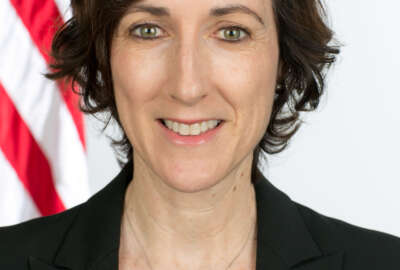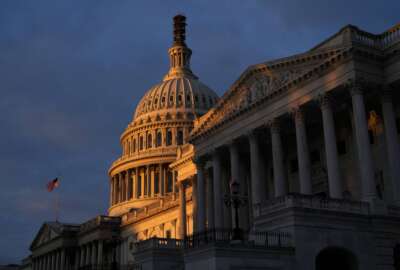New White House innovation office to take on federal acquisition
President Donald Trump is naming Jared Kushner, the assistant to the President and his son-in-law, to lead the new Office of American Innovation.
The White House is creating a new Office of American Innovation to take on one of the stickiest wickets in the government — procurement, and particularly the buying of technology.
White House Press Secretary Sean Spicer said President Donald Trump is naming Jared Kushner, the assistant to the President and his son-in-law, to lead the new office.
“The Office of American Innovation will apply the President’s ahead of schedule and under budget mentality to a wide number of government operations and services, enhancing the quality of life for all Americans,” Spicer said March 27 during his daily briefing in Washington. “The office will have a particular focus on technology and data, hearing back from leaders in the industry. As some of its first priorities, the office will focus on modernizing the technology of every federal department, identifying transformational infrastructure projects and reimagining the VA’s systems so they can better serve our nation’s heroes.”
Spicer said Kushner’s lack of experience in government may be a benefit, especially when it comes to acquisition.
“If you’ve ever really dealt with the government and recognize how outdated and unmodernized some of it is, it’s not serving the American people and it’s not serving the constituents that many departments have. I think looking at how we procure different things, and procure technology in particular is important,” Spicer said. “When you look at the VA, in particular, and recognize how it handles certain things. There are certain things it does really well. It buys prescription drugs really well. It buys in bulk and gets the job done. But there are certain things it may not do as well in terms of how it keeps its records, how it serves veterans and how it lends money. We can look at and figure out if there is a better way.”
Spicer said there are certain business practices it can borrow that can help deliver a better service to citizens in some of these key areas.
He said Kushner will be bringing in businessmen with experience to help with this effort.
“This office will bring together the best ideas from government, the private sector, and other thought leaders to ensure that America is ready to solve today’s most intractable problems, and is positioned to meet tomorrow’s challenges and opportunities,” President Trump wrote in the memo released March 27. “The office will focus on implementing policies and scaling proven private-sector models to spur job creation and innovation.”
Reaction to the new office from industry is optimistic.
Dean Garfield, president and CEO of ITI, an industry association, said in a release that bringing in new ideas to solve longstanding problems is an approach the technology industry has used for years.
“We welcome this initiative to bring that same forward thinking mindset to the challenges facing our government by infusing innovation and data-driven efficiencies into the government’s operations,” he said. “Already the White House is tapping talent from the private sector, and we look forward to working with them on this effort as it goes from upstart to government-wide.”
Max Stier, the president and CEO of the Partnership for Public Service, said in a statement that the new office is an encouraging sign that the Trump administration views innovation as a powerful tool to improve government.
“While government and business have many differences, agencies can benefit from bringing private-sector and federal leaders together to find solutions for chronic management problems, federal technology shortcomings and outdated processes,” he said.
Tom Schatz, president of Citizens Against Government Waste, said in a statement that Trump’s plans are reminiscent of the Grace Commission under President Ronald Reagan.
“This commitment is a breath of fresh air to address bureaucratic atrophy,” Schatz said. “A SWAT team attitude is perhaps the best approach that a president can take to tackle the insidious, longstanding problem of government waste, fraud, abuse, and mismanagement, as the new Office of American Innovation will have broad power to implement successful business practices to streamline and shrink government.”
The commission gave Congress its report in January 1984, claiming if its recommendations were followed, the government could save $424 billion in three years and as much as $1.9 trillion per year by the year 2000.
The commission said in 1984 system failures accounted for $160.9 billion and personnel mismanagement comprised $90.9 billion in waste.
“[T]hey are at the foundation of inefficiencies in the federal government. Program waste ($151.3 billion), which accounts for 37.9 percent of the savings recommendations, would also be substantially eliminated if proper systems and personnel management were in place,” Peter Grace said in a letter to the President.
The push for innovation is a well-worn idea.
President Barack Obama released in 2009 a Strategy for American Innovation and updated it in 2015. The strategy focused on research and development, emerging technologies ranging from advanced vehicles to precision medicine and efforts to improve government performance and create a better environment for innovation by the private sector and civil society.
Obama’s team also created what it hoped would be innovative technology and acquisition efforts from the U.S. Digital Service in the White House to the 18F digital services organization in the General Services Administration to the buyer’s clubs in many agencies, including the Department of Health and Human Services.
And of course, the Obama White House created the Presidential Innovation Fellows and Congress made them permanent in January.
President George W. Bush also focused efforts to improve federal processes, starting with the 24 citizen facing e-government initiatives. The President also pushed for innovation around health IT and federal research and development efforts.
President Bill Clinton’s National Performance Review also highlighted the need to improve federal acquisition and management processes.
“The first thing we did to encourage a change of attitude at headquarters and to move more authority and accountability to the front lines was to create reinvention laboratories, where front-line workers and managers could try out their ideas for a change. Now there are about 250 reinvention labs leading the reinvention revolution. They have been called ‘islands of innovation in a sea of bureaucracy,’” the NPR report from September 1996 stated.
Copyright © 2025 Federal News Network. All rights reserved. This website is not intended for users located within the European Economic Area.
Jason Miller is executive editor of Federal News Network and directs news coverage on the people, policy and programs of the federal government.
Follow @jmillerWFED
Related Stories

GSA envisions 18F will be the new hub of digital innovation





